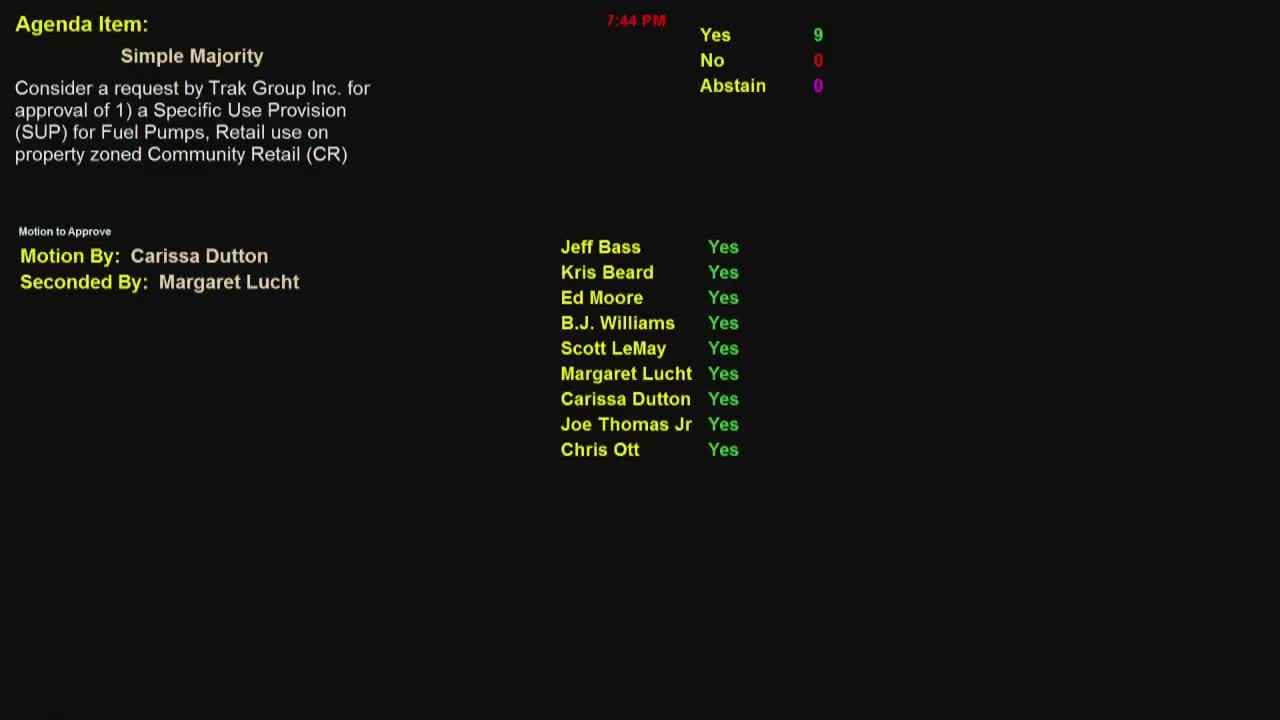Garland City Council approves downtown development plan for First Baptist Church expansion
June 03, 2025 | Garland, Dallas County, Texas
This article was created by AI summarizing key points discussed. AI makes mistakes, so for full details and context, please refer to the video of the full meeting. Please report any errors so we can fix them. Report an error »

A significant development plan took center stage at the Garland City Council meeting on June 3, 2025, as First Baptist Church presented a proposal for a major expansion at 801 West Avenue D. The church seeks to demolish two-thirds of its existing structure and rebuild, which requires several waivers from the city’s development code.
The church's request includes a downtown development plan that aims to enhance the area while adhering to the city’s design standards. However, the church's architectural style does not align perfectly with the existing regulations, prompting requests for six major deviations. These include allowances for a monument sign, reduced window percentages on the building's facade, and adjustments to streetscaping requirements due to space constraints from underground utilities.
Planning Commission members unanimously recommended approval of the church's proposal, emphasizing the importance of the church's long-standing presence in the community and its commitment to investing in downtown Garland. The church's executive pastor, Dennis Veil, highlighted the congregation's desire to remain in the area and continue serving the community through various outreach programs.
Council members expressed support for the project, noting its potential to enhance the downtown landscape. The council ultimately approved the church's expansion plans, marking a pivotal moment for both the church and the revitalization efforts in downtown Garland.
In related discussions, the council also addressed a request from CCM Engineering to amend zoning regulations for a townhome development on Rowlett Road, which faced opposition from some community members concerned about the impact on local property values. Despite the concerns, the council approved the request, reflecting a broader trend of urban development in Garland aimed at increasing residential density and revitalizing neighborhoods.
These discussions underscore the city’s ongoing efforts to balance development with community needs, as Garland continues to evolve and adapt to changing urban dynamics.
The church's request includes a downtown development plan that aims to enhance the area while adhering to the city’s design standards. However, the church's architectural style does not align perfectly with the existing regulations, prompting requests for six major deviations. These include allowances for a monument sign, reduced window percentages on the building's facade, and adjustments to streetscaping requirements due to space constraints from underground utilities.
Planning Commission members unanimously recommended approval of the church's proposal, emphasizing the importance of the church's long-standing presence in the community and its commitment to investing in downtown Garland. The church's executive pastor, Dennis Veil, highlighted the congregation's desire to remain in the area and continue serving the community through various outreach programs.
Council members expressed support for the project, noting its potential to enhance the downtown landscape. The council ultimately approved the church's expansion plans, marking a pivotal moment for both the church and the revitalization efforts in downtown Garland.
In related discussions, the council also addressed a request from CCM Engineering to amend zoning regulations for a townhome development on Rowlett Road, which faced opposition from some community members concerned about the impact on local property values. Despite the concerns, the council approved the request, reflecting a broader trend of urban development in Garland aimed at increasing residential density and revitalizing neighborhoods.
These discussions underscore the city’s ongoing efforts to balance development with community needs, as Garland continues to evolve and adapt to changing urban dynamics.
View full meeting
This article is based on a recent meeting—watch the full video and explore the complete transcript for deeper insights into the discussion.
View full meeting
